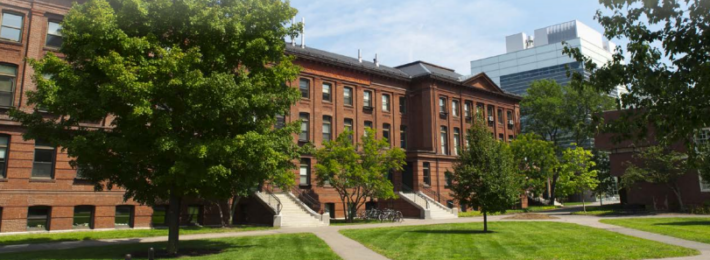
YOU’LL ALSO WANT TO READ:
Benchmarking Deferred Maintenance: A Recent Survey (May 2012)
Proactive Approaches to Deferred Maintenance (November 2011)
In our January – February 2012 survey of facilities managers (read the executive summary here), Academic Impressions learned that while physical plant operations at most institutions have assigned a high priority this year to addressing their deferred maintenance backlog, many falter in making an effective case for funding facilities replacement and maintenance needs.
We turned this week to Daniel King, facilities manager at Auburn University (Auburn, AL), who has recently done some innovative thinking and piloting around just this issue.
Here are two ideas Dan King offers – one for working with academic leaders to prioritize “small and modest” maintenance projects, and one for communicating to institutional leaders the big picture of the institution’s replacement and renewal needs.
A Clear Process for Prioritizing Maintenance Projects
Auburn University has piloted a prioritization process that involves soliciting maintenance needs from across campus and then meeting with the provost to evaluate the proposed projects on a regular basis. The keys to the process are the involvement of the entire campus in a discussion of the institution’s maintenance needs and transparency around the decisions made.
King’s suggested steps:
- On an annual basis, invite each college or each organization (auxiliaries, athletics, etc.) to propose projects for maintenance
- Assemble a master list of the proposed needs; the facilities manager and the provost then review the list together, ensuring that the provost can make informed decisions about what to prioritize
- Publish the prioritized list and an execution plan for that year publicly, so that the physical plant’s campus can see the decisions made and the rationale for them
“At one time,” King recalls, “deans used to express that they didn’t know why this project was funded while this other project wasn’t. They didn’t know who was making the decisions, or why, or how to ask for maintenance funds. So give them an open and transparent process.”
RELATED: THE CURB PROJECT
The University of Wisconsin-Madison has taken a related but different approach, prioritizing not projects but buildings. The Concentrated Upgrade and Repair of Buildings project identifies all the maintenance needs in a given building, and then concentrates efforts and funds on a complete repair and upgrade of that one building. This building-by-building reconditioning is funded in large part out of energy cost savings.
Read our article “Proactive Approaches to Deferred Maintenance” to learn more.
A Bigger Picture: A Replacement/Renewal Scatterplot
But how do you get the necessary conversations with the provost and the chief financial officer going in the first place? The Academic Impressions survey of facilities managers conducted earlier this year found that many facilities managers don’t know how to communicate the urgency of their institution’s renewal and maintenance needs.
King suggests taking a step back and offering campus leaders a quick snapshot that tells – on one piece of paper – the overall story of the replacement and renewal needs of your physical campus. Why not offer a scatter plot, charting an x axis representing the extent of a building’s renewal needs and a y axis representing the academic value of a facility (as ranked by the provost)?
Such a chart would have four quadrants, and you could then place each of your campus buildings within the appropriate quadrant:
- Low academic value, high maintenance and renewal need – this may be a candidate for demolition and replacement.
- High academic value, high maintenance and renewal need – this shows your institutional leaders at a glance which facilities are high priority for investment.
- High academic value, low maintenance and renewal need – this quadrant is where you wish more of your facilities would fall. These are high-value buildings that need little operations and maintenance investment.
- Low academic value, low maintenance and renewal need – these are facilities where it is safe to defer maintenance and renewal investment.
“If you can rank your facilities within each of these quadrants, you can use such a chart as a tool to convey a fairly complex situation in a readable manner. They don’t want to see 55 charts on 55 buildings and their problems; they can’t absorb all that. You need to a way to quickly tell the story about the institution’s renewal and replacement needs.”
Daniel King, Auburn University
Armed with such a tool, you can encourage more proactive and informed conversations around replacement and renewal planning.

